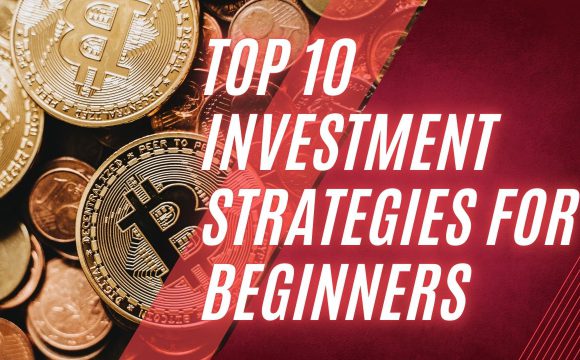Introduction: Navigating the Stormy Seas of Market Volatility
Welcome aboard the roller coaster of investing! Market volatility can feel like you’re strapped into a rickety ride, with wild, unexpected dips that make your stomach churn. But fear not! Rebalancing your portfolio is like having a trusty seatbelt and a knowledgeable guide. This article will navigate you through the storm, ensuring your investments remain on course even when the market gets bumpy.
Understanding Portfolio Rebalancing: The What and Why
So, what exactly is portfolio rebalancing? Think of it as tidying up your financial closet. Over time, your investments may drift from your initial goals due to market fluctuations. Rebalancing brings your portfolio back to your desired asset allocation. Why is this essential? Without it, you could end up with a portfolio that’s riskier than you intended—much likeDiscovering your refrigerator has become a habitat for expired food!
Recognizing the Signs: When Is It Time to Rebalance?
When should you consider rebalancing your portfolio? Look out for key indicators:
- Dramatic market movements—a sudden surge or dip can skew your allocations.
- Life changes—new jobs, retirement, or an unexpected windfall can alter your financial outlook.
To put it simply, if your investments feel out of whack, it’s time to take out that trusty investment tool and start making adjustments. It’s like knowing when to call the fire department—better safe than sorry!
Setting Your Investment Goals: The Foundation of a Strong Portfolio
Before jumping into rebalancing, ask yourself: What are your investment goals? Aligning your portfolio with your objectives is crucial. Are you saving for retirement, a home, or that dream vacation? Remember, every goal has a timeline and a risk tolerance. Think of your portfolio as a garden; it needs periodic care to thrive.
Assessing Your Current Asset Allocation: The Game Plan
Evaluating your current asset allocation is like checking the ingredients of your favorite dish. Ensure you’ve got a healthy mix! Analyze your assets—stocks, bonds, real estate, or even cryptocurrencies—and how they perform in varying market conditions. Each asset class has its role, much like food groups in a balanced diet.
Calculating Your Risk Tolerance: Are You a Turtle or a Hare?
Understanding your risk tolerance is vital. Are you a cautious turtle, or do you charge in like the hare? You can assess this through a simple quiz or checklist. Reflect on how you felt during recent market downturns. If you panicked, you might want to dial down your risk a notch. Remember, moderation is key; no one wants to tackle investing with a frenzied attitude!
Choosing the Right Rebalancing Strategy: One Size Doesn’t Fit All
Not all rebalancing strategies are created equal. Consider these options:
- Time-based: Regular intervals (monthly, quarterly) make it simple to stay on track.
- Threshold-based: Rebalance when your allocations drift beyond a set percentage.
- Tactical: Adjust based on market conditions—it’s a bit like being a weather vanes, except instead of predicting wind, you’re forecasting market trends.
Each method comes with its own benefits, and you can mix and match!
The Benefits of Regular Rebalancing: Avoiding Emotional Roller Coasters
Regularly rebalancing your portfolio offers significant advantages. It helps maintain discipline, prevents emotional decision-making, and ensures that your investments align with your goals. Think of it like dating: maintaining balance keeps things exciting and prevents any one partner (or asset) from taking over your life!
Rebalancing in Action: Step-by-Step Guide
Here’s how to put a plan into action:
- Review your current allocations.
- Determine your target allocation.
- Identify assets that need to be bought or sold.
- Execute your trades and adjust your portfolio.
- Monitor regularly but resist the urge to tinker endlessly.
Utilize investment tools or platforms to simplify this process. Remember, just like fixing a leaky faucet, it’s best not to take a DIY approach if you’re not equipped for the task.
Adjusting for Market Conditions: The Art of Flexibility
Markets change faster than fashion trends—what was once in favor can quickly go out of style. When rebalancing, stay informed about current market conditions and adjust your strategy accordingly. But don’t get overwhelmed by every news cycle! Think of it like dressing for the weather—an umbrella on standby doesn’t mean you have to live in constant rain gear.
Diversification: Your Portfolio’s Safety Net
Diversification is essential; it’s your portfolio’s safety net. A well-diversified portfolio means not putting all your eggs in one basket—or, for the more adventurous, a dozen different colorful baskets! Ensure your investments span various sectors, industries, and geographies to cushion against unpredictable shocks.
Tax Implications of Rebalancing: The Fine Print
Rebalancing can have tax implications. If you sell off assets that have appreciated, you might incur capital gains taxes. To mitigate this, consider methods like tax-loss harvesting, where you offset gains with losses from other investments. Just remember, taxes may be inevitable, but they don’t have to be a game breaker.
Reassessing Financial Goals: Are They Still Relevant?
A check-in on your financial goals is essential, especially if significant life changes occur. Are your goals still aligned with your vision? Remember to update your portfolio based on this new perspective. Think of your financial journey as technology—sometimes, an upgrade is needed to keep up with the times.
Keeping Emotions in Check: The Investor’s Guide to Zen
It’s easy to let emotions run wild during market swings, but a steady mindset is your best friend. Focus on long-term goals and avoid knee-jerk reactions to market dips. Mindful investing is your zen path to financial success. Picture yourself meditating in front of a calm sea while considering your next move!
Using Market Research and Data: Be the Sherlock of Your Portfolio
Leverage market research for informed decision-making. Be like Sherlock Holmes, digging into data and analyzing trends. Reliable sources of financial news can save you from the perils of misinformation. Remember, every good detective needs a trusted magnifying glass!
The Role of Financial Advisors: A Trusted Companionship
Sometimes, it’s beneficial to seek advice from financial professionals. Having a second opinion can provide clarity and valuable insights. After all, even the most seasoned investors don’t shy away from a trusted advisor—much like calling a friend when attempting to assemble that complex IKEA furniture!
Building a Long-Term Strategy: More Than Just Rebalancing
Rebalancing is just one piece of the puzzle. It’s essential to develop a comprehensive long-term investment strategy. The market may waver, but a solid plan is your sturdy ship that will weather any storm. Much like planning a road trip, having your route mapped keeps you on track, even when navigating detours.
The Importance of Continuous Learning: Stay Ahead of the Curve
Investing is a lifelong learning journey. Stay curious, keep reading, and pursue education about new trends, tools, and strategies. Equip yourself with as much knowledge as possible to make informed choices. After all, navigating the stock market should be more than just guesswork—it’s a fascinating adventure!
Conclusion: Embrace the Chaos with Confidence
In the whirlwind of market ups and downs, rebalancing your portfolio is your trusty compass. Embrace the chaos, stay informed, and remember that investing is a journey, not a destination. With a well-balanced portfolio and a good sense of humor, you can thrive even in the most volatile markets. So, fasten your seatbelt and enjoy your investing adventure—it’s bound to be a wild ride!






